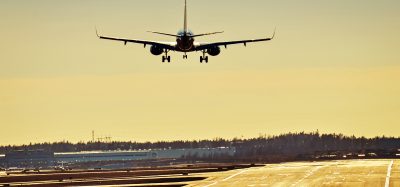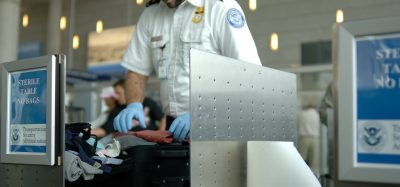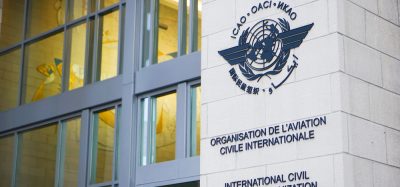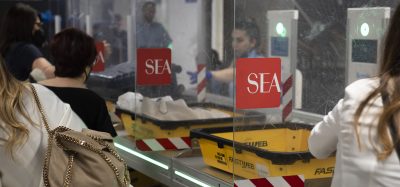Patrolling the borders
- Like
- Digg
- Del
- Tumblr
- VKontakte
- Buffer
- Love This
- Odnoklassniki
- Meneame
- Blogger
- Amazon
- Yahoo Mail
- Gmail
- AOL
- Newsvine
- HackerNews
- Evernote
- MySpace
- Mail.ru
- Viadeo
- Line
- Comments
- Yummly
- SMS
- Viber
- Telegram
- Subscribe
- Skype
- Facebook Messenger
- Kakao
- LiveJournal
- Yammer
- Edgar
- Fintel
- Mix
- Instapaper
- Copy Link
Posted: 8 August 2011 | Brodie Clark, Head of the UK Border Force at the UK Border Agency | No comments yet
More than 100 million passengers and billions of pounds worth of freight enter the UK through airports each year. Airports are the largest entry point for traffic into the UK and the UK Border Agency is the first point of contact through the border force.
Formed in 2008, the UK Border Agency is responsible for securing the UK border and controlling migration, with the border force being the law enforcement arm responsible for enforcing customs and immigration law at the border. The Agency uses innovative technology and robust controls to help protect the country from illegal immigration, smugglers, organised crime and terrorism.
More than 100 million passengers and billions of pounds worth of freight enter the UK through airports each year. Airports are the largest entry point for traffic into the UK and the UK Border Agency is the first point of contact through the border force.
Formed in 2008, the UK Border Agency is responsible for securing the UK border and controlling migration, with the border force being the law enforcement arm responsible for enforcing customs and immigration law at the border. The Agency uses innovative technology and robust controls to help protect the country from illegal immigration, smugglers, organised crime and terrorism.
In order to fulfil its customs and immigration roles, the agency makes full use of new technology. In the same way that passengers can be pre-screened through tools such as the agency’s e-borders system (which pre-checks passenger data against watch lists to identify criminals and persons of interest), and checked through border control using facial recognition gates, freight and luggage can be similarly screened. The agency’s Freight Targeting System (FTS) provides real time risk assessment on freight arriving in the UK, allowing the agency’s officers to target high risk goods whilst speeding the journey for legitimate freight.
Similarly, the CHIEF system – Customs Handling of Import and Export Freight – records the movement of all goods and allows importers, exporters and freight forwarders to complete their customs formalities electronically. The system automatically checks for errors in the information provided and assesses whether a trader’s entry is correct and whether the trade responsible for the declaration is authorised for a simplified clearance procedure for import or export. CHIEF will quickly notify the trader if the goods require any documentary or physical examination by the UK Border Agency staff before clearance.
In 2010, the agency launched the National Border Targeting Centre, taking a significant step in pulling together all of the information used to screen traffic moving to or from the UK. The Centre acts as a central hub for the analysis of information on passengers and goods, including data captured through e-Borders, the freight targeting system and CHIEF.
Traveller information coming into the National Border Targeting Centre is yielding results in combating terrorist threats, spotting organised criminals and stopping immigration abuse and catching fugitives from justice. Currently the e-Borders system checks 90 per cent of flights from outside the EU, and up to 60 per cent of those from within the EU.
In the last year, the e-Borders system flagged suspects wanted in connection with a number of serious crimes and resulted in the arrest of people wanted in connection with 18 murders, 27 rapes, 29 sex offences, and 25 violent crimes.
And since 2005 it has also helped seize half a tonnes of drugs, five tonnes of loose tobacco and nearly seven million cigarettes.
The agency also uses a range of equipment at airports designed to detect individuals and illicit, dangerous and/or prohibited substances. These include radiological detection systems such as ‘cyclamen’, the use of detector dogs, X-ray machines and a range of devices that are used to identify drugs and explosives. We also use mobile freight scanners to scan the contents of containers and routinely X-ray passenger luggage after it is offloaded.
The agency has some 70 detector dogs based throughout the UK who are active in the airport luggage and freight environment, and are used to search passengers and their luggage as they pass through the customs channel. The dogs have a very acute sense of smell and have been trained to search for drugs, tobacco, cash, animal-based products and firearms, as well as people arriving illegally. Having detected a scent, they can pinpoint the exact location of the scent’s source by sitting and staring (known as a passive indication). Highly adaptable and skilfully trained, the agency’s dogs can quickly search large consignments of freight and get into hard to reach places, whilst their unassuming, friendly nature allows them to search passenger luggage with minimal disturbance.
Through the use of these tools and targeting based on risk, the UK Border Agency has been able to seize considerable quantities of cigarettes, illicit drugs, dangerous weapons, and counterfeit and pirated goods
A key area of work for the agency is the detection of Class A drugs being smuggled into the country. The Home Office estimates that the illegal drug market in the UK is worth between £4-6.6 billion and that the use of Class A drugs causes around £17.6 billion in crime and health costs each year. By targeting groups which are involved in bringing in Class A drugs we are able to disrupt a significant proportion of criminal activity which crosses our border.
Going forward, the agency will continue to target those who present the highest risk whilst facilitating legitimate trade and travel. Increased use of technology and utilising intelligence which focuses on the greatest risks will have a key role to play in achieving this.
Airport Case Studies
June 2010: Leeds Bradford Airport
On 29 June 2010, 12 kilos of heroin were discovered in a hard sided suitcase. The discovery was made by officers working at Leeds Bradford Airport. Officers had been issued an advanced alert of a passenger fitting a current class (A) profile.
The above seizure then led onto another 10 kilo heroin seizure fitting the same profile in Leeds a few weeks later. Feedback from the intercepting officer confirmed that had they not had the previous profile to work off, this seizure would not have been detected.
March 2010: Luton Airport
On 20 March 2010, UK Border Agency Officers at Luton airport had an advanced alert regarding a passenger travelling on a one way ticket booked eight days before departure. The passenger had paid €276 on the day of travel for excess baggage; this was repeated on previous bookings. The passenger also had no bags on return journeys.
As a result, the passenger was intercepted and a total seizure of 45kg of Phenacetin (cutting agent) was seized, disguised as semolina.
August 2009: Manchester Airport
In August 2009 UK Border Agency Officers had been issued an advanced alert regarding a passenger who had brought a ticket through a travel agent which happened to be a youth hostel. The passenger was intercepted and a total of eight kilos of heroin was found in a false bottom of a Delsey suitcase.
Subsequently, the above target led onto another heroin seizure from a similar booking whereby UK Border Agency officers seized 4kgs of heroin in the false bottom of a Songlin wheelie bag.
September 2009: Heathrow Airport
UK Border Agency officers seized around 165kg of heroin with an estimated street value of £8 million, hidden in a consignment of souvenirs from South Africa. The find was notified to the Serious Organised Crime Agency (SOCA), which began an international investigation. Two arrests were made and a further 80kg of heroin seized. Information was passed to the police in South Africa which resulted in a further five arrests. An additional 115kg of heroin and 6,500kg of herbal cannabis and cannabis resin was also found – all of these drugs are believed to have been destined for the UK.
Scotland’s largest class A drug seizure at an airport
On 10 November 2008, 15.6 kilos of cocaine was discovered in a passenger’s luggage by UK Border Agency officers working at Edinburgh airport. This significant seizure, valued at between £750,000 and £1million, was Scotland’s largest class A drugs seizure at an airport. A Mexican national appeared before Edinburgh Sheriff Court on 23 January 2009 and was sentenced to nearly five years imprisonment.
UK’s largest single cigarette seizure
UK Border Agency officers based at Cardiff airport detected the UK’s largest single cigarette seizure on 19 December 2008 – 23.6 million in total. The cigarettes were concealed in three separate containers having arrived at Cardiff Docks from Dubai via Egypt. The removal of the goods required six articulated trucks. Investigations are on-going.
Biometrics
Pre-screening before arrival in the UK plays a key role in the UK Border Agency’s overall strategy for securing the border be it freight, luggage or indeed people. By conducting security checks in advance the agency can ensure that only those legally entitled to enter the UK and prevent those intent on causing harm in our communities.
Biometrics are central to this work. Every visa applicant is required to provide his or her biometric data to one of the UK Border Agency’s 250 visa application centres worldwide or via the agency’s website. Biometric data – which consists of fingerprints and a photograph to enable facial recognition – is checked along with biographic data against a range of police and immigration databases. Forgery checks on all passports, with targeted verification checks on supporting documentation based on risk profiles also take place.
The agency operates a risk-based approach to decision making, closely scrutinising applications from countries where there are high levels of visa abuse or use of fraudulent documents within applications. If these checks do not raise any concerns the visa is issued and the person is free to travel to the UK. On arrival at the airport the biometric data is again checked to confirm that the identity of the person matches their documentation and again they are checked against enforcement databases to confirm that there are no concerns which may have arisen post application.
Biometric data also helps facilitate a secure, more convenient self service alternative through border controls with the increasing number of ePassport gates, which can be quicker should the immigration desks be busy. The UK Border Agency currently has 63 facial recognition gates in 15 terminals which have been used more than 4.5 million times.
The UK was the first to introduce biometric checks in its visas in 2007 as part of a world-wide process designed to protect an individual’s identity, facilitate future entry to the UK, and combat visa fraud and abuse the UK’s immigration and asylum systems.
Next year the Olympic and Paralympic Games will bring a large number of visitors to the UK. The agency is committed to providing for a safe and secure games. In line with our strategy of screening people pre-arrival, in October we are opening our Olympic clearing house which will be capable of processing up to 500,000 applications for those involved in the games.
We have put in place a strategy to ensure we can deploy the maximum possible number of officers for peak periods with flexibility to manage surges at different airports. We are also working with partners to develop special designed lanes at ports for arrivals and departures for the games.
We will continue to roll out our programme of improving the passenger experience at the border whether for business as usual visitors or large events such as the olympics, making it more convenient for passengers to pass through immigration and customs controls whilst meeting our prime objective of maintaining a secure border.
About the Author
Brodie Clark is head of the UK Border Force. This covers the UK immigration control activity at sea and airports, including responsibility for the operation of Juxtaposed Controls in France and Belgium, and the frontline detection of element of customs. He has responsibility for modernising business change by using new technology to provide Automated Clearance Systems, Cyclamen and wider e-border programmes. Brodie is also the responsible board member for ensuring the UKBA elements of the 2012 London Olympics are delivered. He has been in the UK Border Agency since 2003. Prior to this his career has been in the UK prison service, where his final two board level positions has been as Director of the High Security Estate and Director of Security. Brodie was awarded a CBE in the 2010 new year’s honour list.
















